Preliminary Survey to Understand the Epidemiology of COVID-19 and Its Socio-economic Impacts in Libya
Article Information
Abdusalam Sharef Mahmoud*1, Abdulgader Dhawi2, Aziza Sulieman Mayouf3, Ahlam Masaud Ellafi4,5
1Department of Preventive Medicine, Faculty of Veterinary Medicine, University of Tripoli, Tripoli, Libya
2Department of Microbiology and Parasitology, Faculty of Veterinary Medicine, University of Tripoli, Tripoli, Libya
3Quality Control Department, Central Blood Bank, Tripoli, Libya
4Histology and Genetics Department, Faculty of Medicine, University of Tripoli, Tripoli, Libya
5Medical Department, , Central Blood Bank, Tripoli, Libya
*Corresponding Author: Abdusalam Sharef Mahmoud, Department of Preventive Medicine, Faculty of Veterinary Medicine, University of Tripoli, P.O. Box 13662, Tripoli, Libya
Received: 14 January 2021; Accepted: 26 January 2021; Published: 02 February 2021
Citation: Abdusalam Sharef Abdusalam Mahmoud, Aziza Sulieman Mayouf, Ahlam Masaud Ellafi, Abdulgader Dhawi. Preliminary Survey to Understand the Epidemiology of COVID-19 and Its Socio-economic Impacts in Libya. Fortune Journal of Health Sciences 4 (2021): 243-256.
View / Download Pdf Share at FacebookAbstract
Background: During the last three decades there are many viral infections emerging and re-emerge with high socio-economic and public health impacts worldwide. The Coronavirus Severe Acute Respiratory Syndrome (SARS-CoV-2) emerged in China in late December 2019. Later, on 30th Jan 2020, the World Health Organization (WHO) has constituted the COVID-19 as a public health emergency of international concern (PHEIC).
Objectives: To understand the epidemiological patterns and assessing potential socio-economic impacts of the COVID-19 is critical and how to determine these impacts on social life is considered fundamental. Therefore, the present preliminary survey was conducted firstly to understand the epidemiological situation of COVID-19 in the country, and secondly to determine the socioeconomic impacts of the COVID-19 among Libyan population to build up strategies concerning socio-economic response by the technical team committee.
Materials and Methods: All relevant data regarding the epidemiological situation of COVID-19 in Libya was collected and interpreted. Regarding socioeconomic impacts, the questionnaire was designated and distributed online among the population in the period (April – May 2020) to determine the socio-economic impacts of COVID-19 among society. The questionnaire was distributed and filled-in online. Unexpectedly, the total number of participants was relatively (141 participants). All the answers of the respondents were received through the electronic e-mail that linked with the software program (Monkey-Survey), and the obtained data was processed and analysed accordingly.
Results: The first confirmed case of COVID-19 in Libya was estimated to be reported on 24th March 2020. The results revealed that, from 24th March to 22 April 2020, during 30 days, about (1181) samples screened by RT-PCR, the results revealed that (59), (1), and (15) confirmed cas
Keywords
COVID-19; SARS-CoV-2; Pandemic; Socioeconomic; Libya
COVID-19 articles; SARS-CoV-2 articles; Pandemic articles; Socioeconomic articles; Libya articles, COVID-19 articles COVID-19 Research articles COVID-19 review articles COVID-19 PubMed articles COVID-19 PubMed Central articles COVID-19 2023 articles COVID-19 2024 articles COVID-19 Scopus articles COVID-19 impact factor journals COVID-19 Scopus journals COVID-19 PubMed journals COVID-19 medical journals COVID-19 free journals COVID-19 best journals COVID-19 top journals COVID-19 free medical journals COVID-19 famous journals COVID-19 Google Scholar indexed journals SARS-CoV-2 articles SARS-CoV-2 Research articles SARS-CoV-2 review articles SARS-CoV-2 PubMed articles SARS-CoV-2 PubMed Central articles SARS-CoV-2 2023 articles SARS-CoV-2 2024 articles SARS-CoV-2 Scopus articles SARS-CoV-2 impact factor journals SARS-CoV-2 Scopus journals SARS-CoV-2 PubMed journals SARS-CoV-2 medical journals SARS-CoV-2 free journals SARS-CoV-2 best journals SARS-CoV-2 top journals SARS-CoV-2 free medical journals SARS-CoV-2 famous journals SARS-CoV-2 Google Scholar indexed journals Pandemic articles Pandemic Research articles Pandemic review articles Pandemic PubMed articles Pandemic PubMed Central articles Pandemic 2023 articles Pandemic 2024 articles Pandemic Scopus articles Pandemic impact factor journals Pandemic Scopus journals Pandemic PubMed journals Pandemic medical journals Pandemic free journals Pandemic best journals Pandemic top journals Pandemic free medical journals Pandemic famous journals Pandemic Google Scholar indexed journals Socioeconomic articles Socioeconomic Research articles Socioeconomic review articles Socioeconomic PubMed articles Socioeconomic PubMed Central articles Socioeconomic 2023 articles Socioeconomic 2024 articles Socioeconomic Scopus articles Socioeconomic impact factor journals Socioeconomic Scopus journals Socioeconomic PubMed journals Socioeconomic medical journals Socioeconomic free journals Socioeconomic best journals Socioeconomic top journals Socioeconomic free medical journals Socioeconomic famous journals Socioeconomic Google Scholar indexed journals Libya articles Libya Research articles Libya review articles Libya PubMed articles Libya PubMed Central articles Libya 2023 articles Libya 2024 articles Libya Scopus articles Libya impact factor journals Libya Scopus journals Libya PubMed journals Libya medical journals Libya free journals Libya best journals Libya top journals Libya free medical journals Libya famous journals Libya Google Scholar indexed journals
Article Details
Introduction
During the last three decades, there are many viral infections emerging and re-emerging with high socio-economic and public health impacts worldwide. The Coronavirus Severe Acute Respiratory Syndrome (SARS-CoV-2) emerged in China in late December 2019 [1,2]. SARS-CoV-2 expand across China and slipover beyond with highly case fatality reports in some countries [3]. Later, on 30th Jan 2020, the World Health Organization (WHO) has constituted the COVID-19 as a public health emergency of international concern (PHEIC) [3]. During February 2020, the chines healthy authority reported (80,000) and (2900) of COVID-19 confirmed cases and deaths respectively [4]. Consequently, SARS-COV-2 slipover and struck many countries worldwide with great significantly increase of risk of dying impacts, according to the WHO report, by the end of March 2020 more than 200 countries were reported SARS-CoV-2 infection and approximately 750 890 confirmed cases and 36 405 deaths [5]. However, on 11th March WHO declared COVID-19 as a pandemic of international concern [6], as a result, this announcement many countries worldwide implemented their strategies to contain and mitigate the impact of novel SARS-CoV-2 pandemic. Following the recommendations of WHO for prevention and control of COVID-19, and also as refer to the chinese healthy authority strategies for mitigation of both public health and economic impacts of COVID-19. On 23 January 2020 chinese Authority announced the Wuhan Lockdown consequently the travel restrictions were also enforced on the nearby cities, and implemented necessary quarantines, strict hygienic measurements and social distancing to contain the pandemic [7,8]. Unfortunately, due to unpredictable impacts of the virus on the public by causing high morbidity and mortality rates within short period of time in some countries [4,6], and therefore those countries were not well-prepared to face such challenges for combat COVID-19 pandemic due to weakness in the public health system as well as those having an economic crises and economic downturn. These impacts greatly expand to influence on many sectors especially on the small and medium markets that might be an end to the worst economic downturn. The Libyan government implemented lockdown measures since 17th April 2020 such as schools and universities lockdown locking down all business private factories, workshops, and all private sectors. However, the first COVID-19 case in Libya was reported on 24th March 2020 [9,10]. Since then the pandemic in Libya has been a source of considerable panic for most people mainly in the capital Tripoli. This panic is mainly due to the weak health system in the country besides the daily suffering of civil war consequences since April 2019 in the Tripoli region. Assessing the potential socio-economic impacts of the COVID-19 is critical and how to determine these impacts on social life is considered fundamental. Therefore, the present preliminary survey was conducted firstly to understand the epidemiological situation of COVID-19 in the country, and secondly to determine the socioeconomic impacts of the COVID-19 among Libyan population.
Material and Methods
Exploiting of epidemiological data
All relevant data regarding the epidemiological situation of COVID-19 in Libya was collected and analysed and interpreted accordingly (Descriptive statistics were computed).
Questionnaire design
The questionnaire was designated and distributed among the population to determine the socio-economic impacts of COVID-19 among the society. Questionnaire structure was designated in English version, therefore, all relevant data collection tools were first prepared in English, then translated to Arabic language, then retranslated to English to check for consistency.
Questionnaire Survey
The designated questionnaire was distributed and filled online. All the answers of the respondents were received through the electronic e-mail that linked with the software program (Monkey Survey), and the obtained data were processed and analysed accordingly.
Results
Epidemiological patterns of COVID-19
The first confirmed case of COVID-19 in Libya was reported on 24th March 2020. The epidemiological data revealed that only one confirmed positive case of COVID-19 was reported according to NCDC, Libya. The results revealed that, from 24th March to 22 April 2020, during 30 days, about (1181) samples screened by RT.PCR, the results revealed that (59), (1), and (15) confirmed cases, death, and recovered respectively (Figure 1). There were (9) and (13) COVID-19 reported cases on 15th and 16th April respectively, however, by mid-April 2020, approximately (63) confirmed cases as compared to neighboring countries (Figures 2 & Figure 3). During May 2020, approximately (6066) samples were screened by RT-PCR at reference laboratory of WHO, NCDC, Libya, and the results reported of (156), (99), (52) and (5) of COVID-19 confirmed cases, active cases, recovered and deaths respectively (Figure 4). During Jun 2020, according to the epidemiological data in the most sampled Libya cities there was variability in the temporal and the spatial distribution of COVID-19 in different Libyan provinces (Figure 5). The highest and lowest of (22.33%) and (4.90%) positivity rate of SARS-CoV-2 were reported in Zliten city and Benghazi city respectively (Figure 6). An average positivity rate of SARS-CoV-2 was estimated to be (13.92 %), while the case fatality ratio (CFR) was estimated to be (1.95 %) (Figure 7).
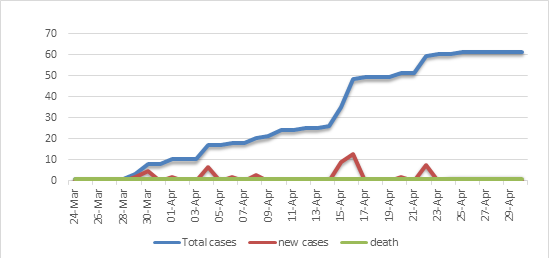
Figure 1: Distribution of COVID.19 total cases, new cases and deaths over time 24 March-30 April 2020
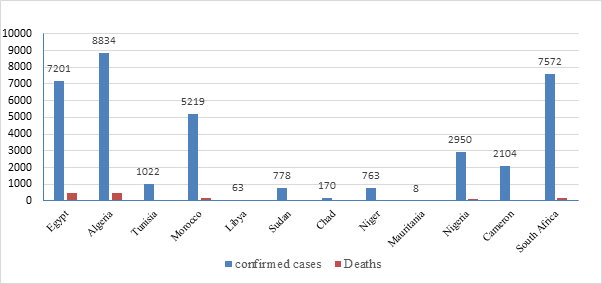
Figure 2: Distribution of COVID-19 confirmed cases and deaths in some neighbouring and African countries as of 17 April 2020
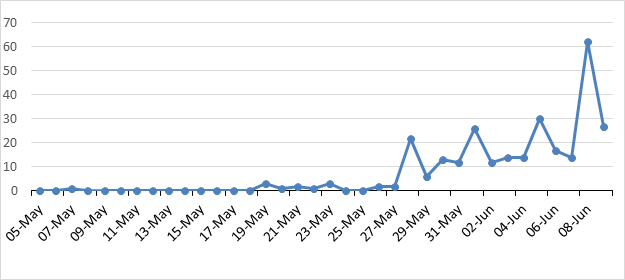
Figure 3: Daily reported cases of COVID-19 from 05 May to 09 Jun
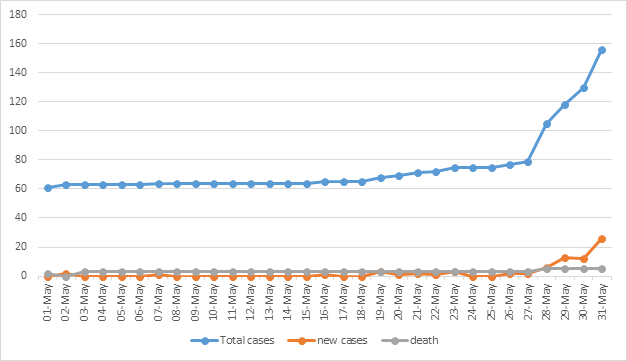
Figure 4: The COVID-19 confirmed cases, active cases, and deaths during May 2020
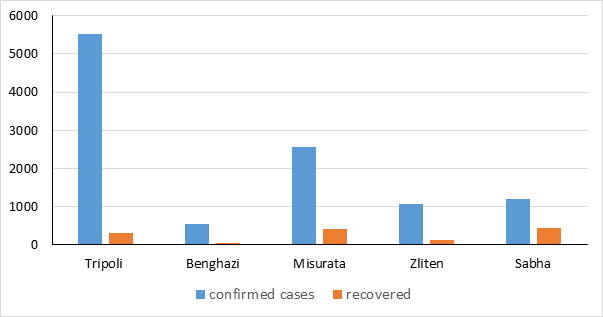
Figure 5: COVID-19 confirmed cases and recovered in the most sampled Libya cities during first week of Jun 2020
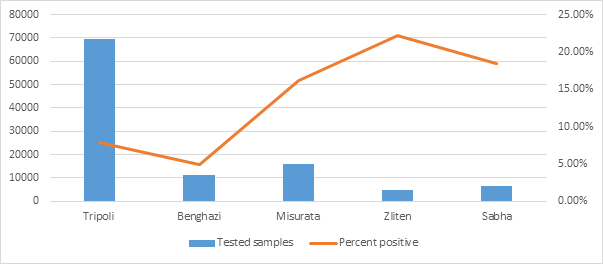
Figure 6: The positivity rate of COVID-19 in the most sampled Libyan cities
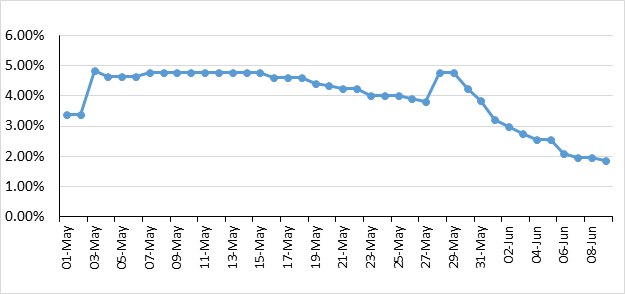
Figure 7: Case Fatality Ratio of COVID-19 from 01 May-09 Jun 2020
Socioeconomic impacts of COVID-19
In this questionnaire survey (62.30%) and (37.68%) of male and females respectively enrolled in this study. Of the respondents enrolled in this report, (94 percent) were > 25 years of age. The questionnaire survey demonstrated that (90.78%) of the participants’ resident in the city while (9.30%) in the village. In regards to the history of the travelling outside the country at the beginning of the COVID-19 pandemic, the results revealed that (86.53%) and (13.47%) was not travelling and travelling out the country respectively (Figure 8). Questionnaire survey reports of (17.14%; 95% CI: 10.82%-23.22%) were belonging to the high risk group to be infected by SARS-CoV-2 (Figure 9). About (19.14%, 95% CI: 12.65%-25.64%) of the respondents had a history of exposure to respiratory disease infection during the last three months. The results revealed that (4.90%) was under quarantine (21.62% was in the quarantine outside the country while 78.38% was in quarantine inside the country). The results showed that (18.81%), (25.74%), (0.99%), (12.87%) and (41.58%) of the population receive the information and recommendations concerning SARS-CoV-2, from TVs, Facebook, friends and colleagues, governments and medical/specialists respectively. Only (2.9%) of the respondents enrolled in this study do not believe the presence of SARS-CoV-2 in the country. Regarding the government transparency the responses were estimated to be (30.39%), (44.12%) and (25.49%) Lack transparency, less transparency and transparency respectively. About of (41.18 %) and (58.82 %) agree and disagree respectively with the precaution measures taken by the government to combat the COVID.19. Regarding the implemented strategy for prevention and control of COVID.19, the results revealed that (13.86%) and (86.14%) sufficient strategy and insufficient strategy respectively. Regarding the Social (family) relationship before the pandemic, the results reported of (0.98%), (5.88%), (7.84%), (33.33%) and (51.96%) of very weak, weak, good, very good and excellent of the relationships respectively, while impacts on the social relationship among relatives, the questionnaire survey was demonstrated that, (29.78%) no impact, (46.80%) impact and (23.40%) highly impact (Figures 10). The questionnaire survey reported if the daily lifestyle changed positively due to COVID-19 outbreak, the results showed that (39.71%) changed positively while (60.28%) non-changed. In regards to the question, how far communication with your family members has changed due to COVID-19, the results reported of (17%) changed to better, (29%) changed little and (54%) not changed (Figure 11). Regarding the economic impacts, the questionnaire survey reported of (46.10%) relative impacts (Figure 12), and according to the answers of the participants, (94%) and (3.96%) of the respondents agree and disagree respectively by inflation and increases in prices of Libyan market. However, according to questionnaire results, the most goods increase in prices were ration goods and food (62.38%), disinfectants (27.72%), fruits and vegetables (3.96%), drugs (2.97%), water (1.98%) and petroleum and gas (0.99%) (Figure 13). Our questionnaire survey showed that (45.60%) of the participants were running their business from home via the internet. About (32.99%) and (10.31%) of the participants were reduced and suspended from their salary respectively, and that was during the last three months of COVID-19 pandemic. Only (5.05%) of the participants lost their job. Our questionnaire survey reported that (35.71%) of the participants have other sources of income. Regarding the question, has the government compensated the merchants during the closure, (75.17%) non-compensation, (2.83%) compensation and (21.98%) do not know.
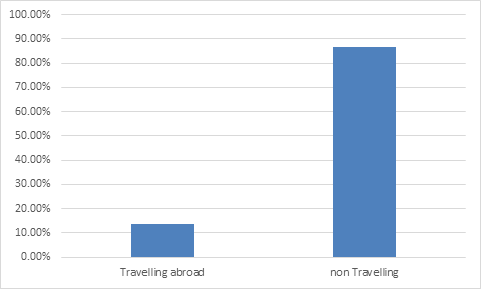
Figure 8: Travelling and non-travelling of Libyan citizen, May 2020 during COVID-19 pandemic
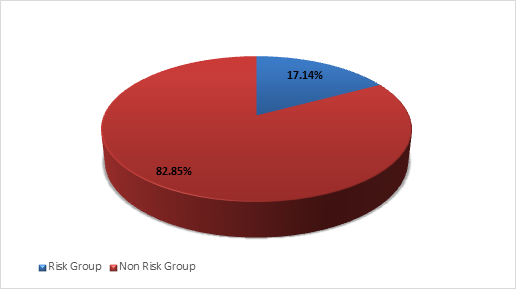
Figure 9: Risk group and non-risk group of COVID-19 among Libyan population
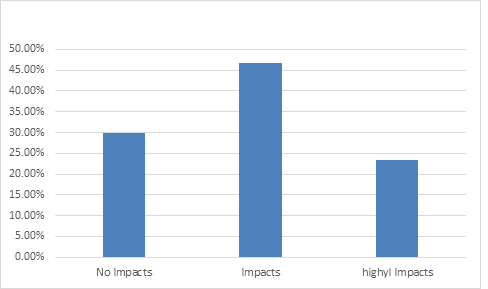
Figure 10: Impacts of COVID-19 on Social Relationships
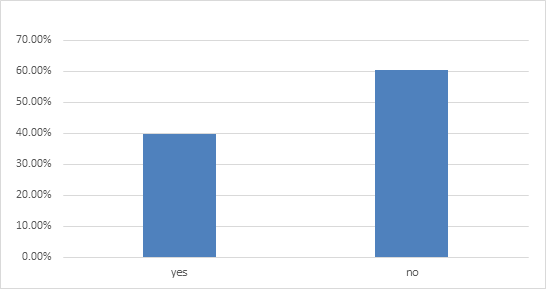
Figure 11: The daily life style positively changes due to COVID-19 outbreaks
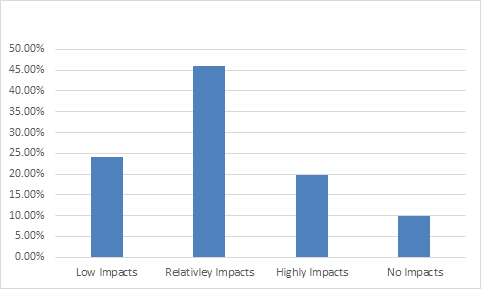
Figure 12: Economic impacts of COVID-19
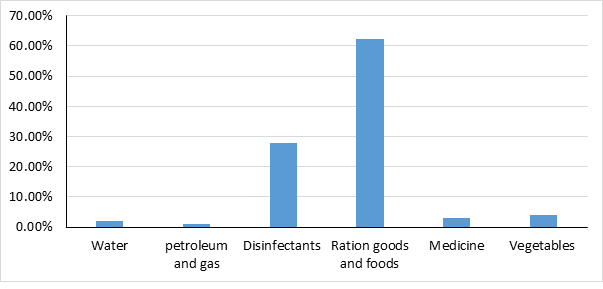
Figure 13: The basic goods which were most increased in price in Libya due to COVID-19
Discussion
The epidemiological situation of SARS-CoV-2 in Libya during the first three months of COVID-19 pandemic was unclear, and there was a scarcity of information regarding the epidemiological situation of SARS-CoV-2 in Libya. The first case of COVID-19 in Libya was reported on 24th March 2020 [9,10]. Comparatively, the first confirmed case of COVID-19 in Tunisia was reported on 4th March 2020 [11], in Algeria on 25th February 2020, in Morocco on 2nd March 2020 [12], and in Egypt on 14th February 2020. In spite the worst and unpredictable reports of epidemic situation of COVID-19 on regional and international level [3], and highly morbidity and mortality rates have been reported of SARS-CoV-2, still, the epidemiological situation of the SARS-CoV-2 constant during the first three months of the COVID-19 pandemic [13]. The temporal and the spatial distribution of COVID-19 in different Libyan provinces was difficult to be estimated, however, the accuracy of the epidemiological data of SARS-CoV-2 across the country was significantly variable. Therefore, the epidemiological situation of COVID-19 in the country seems to be unclear and might be getting the worst scenario and the country might switch to the cluster phase of COVID-19 pandemic phases [14]. Clearly, the number of screened samples per day is not representative in some cities, due to lower and shortage in the supplement of tests. Consequently, the most RT-PCR screening tests were performed only for the suspected cases. The confirmed cases of COVID-19 were estimated to be lower than hundred cases from March through April [9]. According to the WHO recommendations, timeline updating and guideline for COVID-19 prevention and control, the countries have reported less than a hundred cases of SARS-CoV-2 infection among their population still has the opportunity to combat the SARS-CoV-2 transmission within their territories [3], consequently, these imposed of prompt triggers responses by the Libya authority to conduct an early full lockdown due to an escalation of COVID-19 cases between 15th and 16th April 2020. Therefore, the questionnaire survey reported a variable influence of lockdown due to the pandemic on social relationships within families, relatives and friends. Indeed the lockdown significantly influences on social relationships within the family and as well as between the relatives. The Libyan social relationship as many other family custom lives in African and in Asian countries in which are characterized by social relationships [15,16]. The socio-economic impacts of the COVID-19 were estimated to be highly variable and were influenced by civilian war around the capital city Tripoli since last April 2019 and could be a predisposing factor that worsen the situation by increasing impacts of COVID-19 in the country [17]. Tripoli is the largest city in northwest and the capital of Libya with a higher number of population as compared to other cities of the country, and their population number is estimated to be 1,165,085 million [18]. The results reported that a relatively low number of Libyan expatriates were outside the country during the pandemic and Libyan government decided to bring all their expatriates. Accordingly the scientific advice committee conducted instructions by following the national strategies of prevention and control of COVID-19. In spite of only (13.47%) were travelling outside the country during COVID-19 pandemic, however, According to the epidemiological data of COVID-19, the epidemiological situation of COVID-19 dramatically influenced by return of expatriates. Therefore, all passengers who have been abroad will be put under quarantine for 14 days, as recommended by the scientific advice committee for combating of COVID-19 in Libya. The Libyan government conducted several measurements to combat the COVID-19 pandemic, and their measurements were based on a national strategy for prevention and control of COVID-19. In spite of instability of the country and shortage in health facilities due to the war since April 2019 [19]. Inflation has greatly increased by two fold as compared before the coronavirus pandemic. Its well-known, Libyan government's income depends on oil production, therefore, overall impacts of COVID-19 on Libyan governmental sectors seem to be relatively low. Clearly, our data is not well representative nor to target population study. And online survey has some limitations and could not be applicable, reachable and accessible to the most affected population, and instability in the country causes some difficulties to certain areas (population) to have internet access and to respond to our online questionnaires therefore, lead to some limitations in respondent obtainability. However, the present study results, still valuable at least in the surveyed population, and credible in line with other studies [15,20] that reported socio-economic impacts of the COVID-19.
Conclusion
The epidemiological situation of the SARS-CoV-2 constant during the first three months of the COVID-19 pandemic. The temporal and the spatial distribution of COVID-19 in different Libyan provinces was difficult to be estimated, however, the accuracy of the epidemiological data of SARS-CoV-2 across the country was significantly variable. Our questionnaire survey makes a snapshot of the great economic impact of COVID-19 pandemic on the Libyan societies in different categories and degrees that ranging from lower to highly impacts that depend on the affected area. In spite Libyan Authority adopted many strategies planned to combat the pandemic on a different level according to the criteria that recommended by the WHO to fight against the COVID-19. Still, the country is facing challenges to fighting against the coronavirus pandemic to prevent jeopardizing lives.
Reference
- Hui DS, Azhar EI, Madani TA, et al. The continuing 2019-nCoV epidemic threat of novel coronaviruses to global health—The latest 2019 novel coronavirus outbreak in Wuhan, China. International Journal of Infectious Diseases 91 (2020): 264-266.
- Xu XW, Wu XX, Jiang XG, et al. Clinical findings in a group of patients infected with the 2019 novel coronavirus (SARS-Cov-2) outside of Wuhan, China: retrospective case series. BMJ 368 (2020).
- World Health Organization. Archive timeline of COVID.19.https:// www.who.int/ news-room/detail/27-04-2020-who-timeline---covid-19 (2020a).
- Van Damme W, Dahake R, Delamou A, et al. The COVID-19 pandemic: diverse contexts; different epidemics—how and why?. BMJ Global Health 5 (2020): e003098.
- World Health Organization. Coronavirus disease 2019 (COVID-19) Situation Report-41, 2020. Available: https://www.who.int/docs /default source/coronaviruse /situation /reports /2 0 200301-sitrep-41-covid-19.pdf?sfvrsn=6768306d_2 [Accessed 7 Apr 2020] (2020b).
- World Health Organization. Coronavirus disease 2019 (COVID-19) Situation Report–12;1February2020,2020. Available: https://www.who.int/docs/default source /coronaviruse/situation-reports/20200201-sitrep-12-ncov.pdf?sfvrsn=273c5d35_ 2 [ Accessed7Apr2020] (2020c).
- Hamblin J. A Historic Quarantine: China’s attempt to curb a viral outbreak is a radical experiment in authoritarian medicine. Atlantic (2020).
- Lotfi M, Hamblin MR, Rezaei N. COVID-19: Transmission, prevention, and potential therapeutic opportunities. Clinica Chimica Acta; International Journal of Clinical Chemistry 508 (2020): 254-266.
- National Center for Diseases Control. COVID-19 Updates in Libya. Available from: https://www.covid19.ly. Retrieved data from March-April 2020 (2020).
- Elhadi M, Momen AA, Abdulhadi OM. A COVID-19 case in Libya acquired in Saudi Arabia. Travel Medicine and Infectious Disease (2020).
- Chakroun H, Lasfar NB, Fall S, et al. First Case of Imported and Confirmed COVID-19 in Tunisia. La Tunisie Médicale 98 (2020): 258-260.
- Report of the WHO-China Joint Mission on Coronavirus Disease 2019 (COVID-19). Available at: https://www.who.int/docs/default-source/coronavir use/who-china-joint-mission-on-covid-19-final-report.pdf (Accessed 13 March 2020) (2020d).
- Rayes AA, Annajar BB, Dayhum AS, Eldaghayes IM. Why there were few cases of coronavirus disease 2019 in Libya during the first two months of the pandemic?. International Journal of One Health 6 (2020): 160-164.
- Gibreel T. Prediction and Analysis of Covid-19 Epidemic in Libya. Available from: https://www.scribd.com/document/455005305/Prediction-and-Analysis-of Covid-19-Epidemic-in-Libya (2020).
- Ozili P. COVID-19 in Africa: socio-economic impact, policy response and opportunities. International Journal of Sociology and Social Policy (2020).
- Ziadé N, El Kibbi L, Hmamouchi I, et al. Impact of the COVID-19 pandemic on patients with chronic rheumatic diseases: A study in 15 Arab countries. International Journal of Rheumatic Diseases 23 (2020): 1550-1557.
- United Nation, Libya. One UN supporting Libya to tackle COVID-19. https://reliefweb.int (2020).
- World Population Review. (2020). https://worldpopulationreview.com/world-cities/tripoli-population
- Elhadi M, Msherghi A. COVID-19 and civil war in Libya: the current situation. Pathog Glob Health 114 (2020): 230-231.
- Guan D, Wang D, Hallegatte S, et al. Global economic footprint of the COVID-19 pandemic. Preprint, 4. https://doi.org/10.21203/rs.3.rs-25857/v1 (2020).


 Impact Factor: * 5.814
Impact Factor: * 5.814 CiteScore: 2.9
CiteScore: 2.9  Acceptance Rate: 11.01%
Acceptance Rate: 11.01%  Time to first decision: 10.4 days
Time to first decision: 10.4 days  Time from article received to acceptance: 2-3 weeks
Time from article received to acceptance: 2-3 weeks 